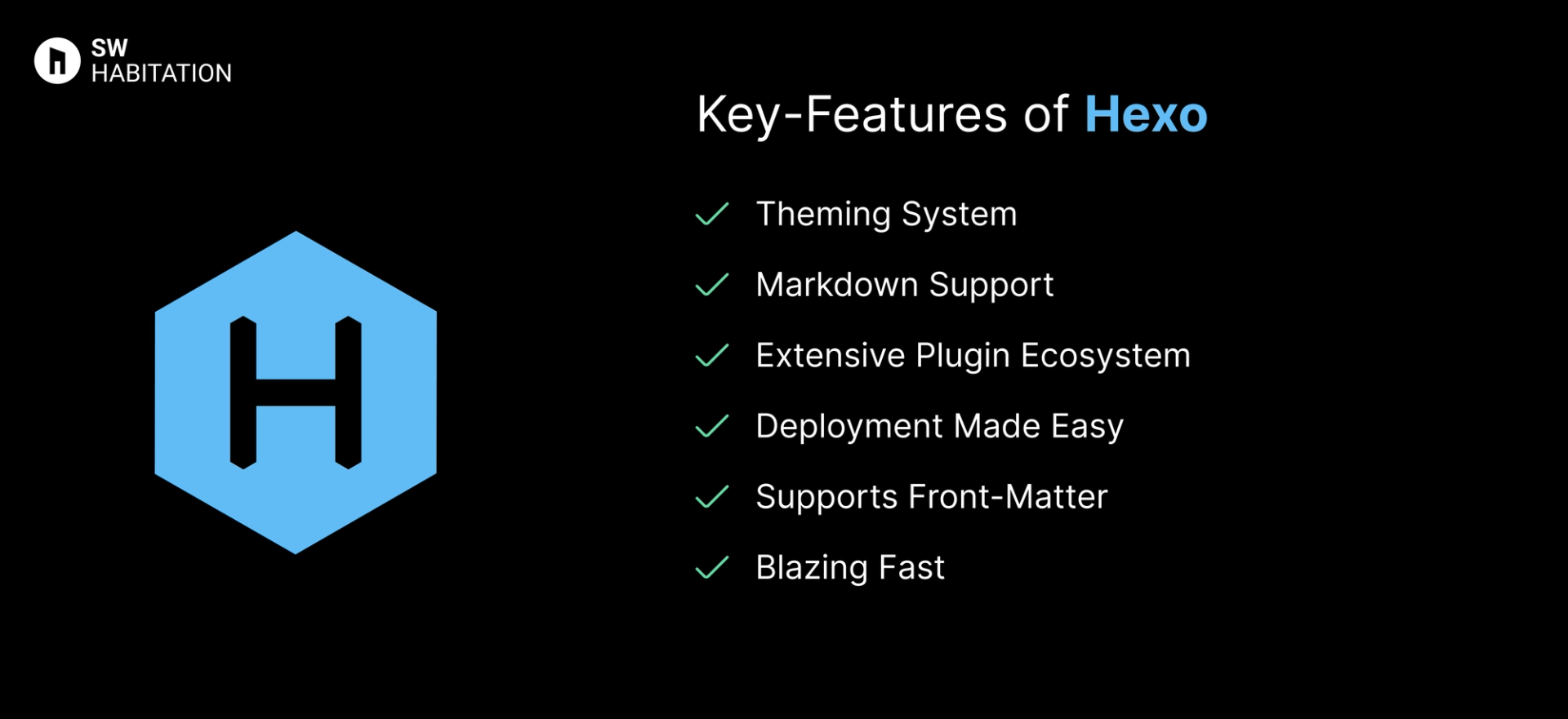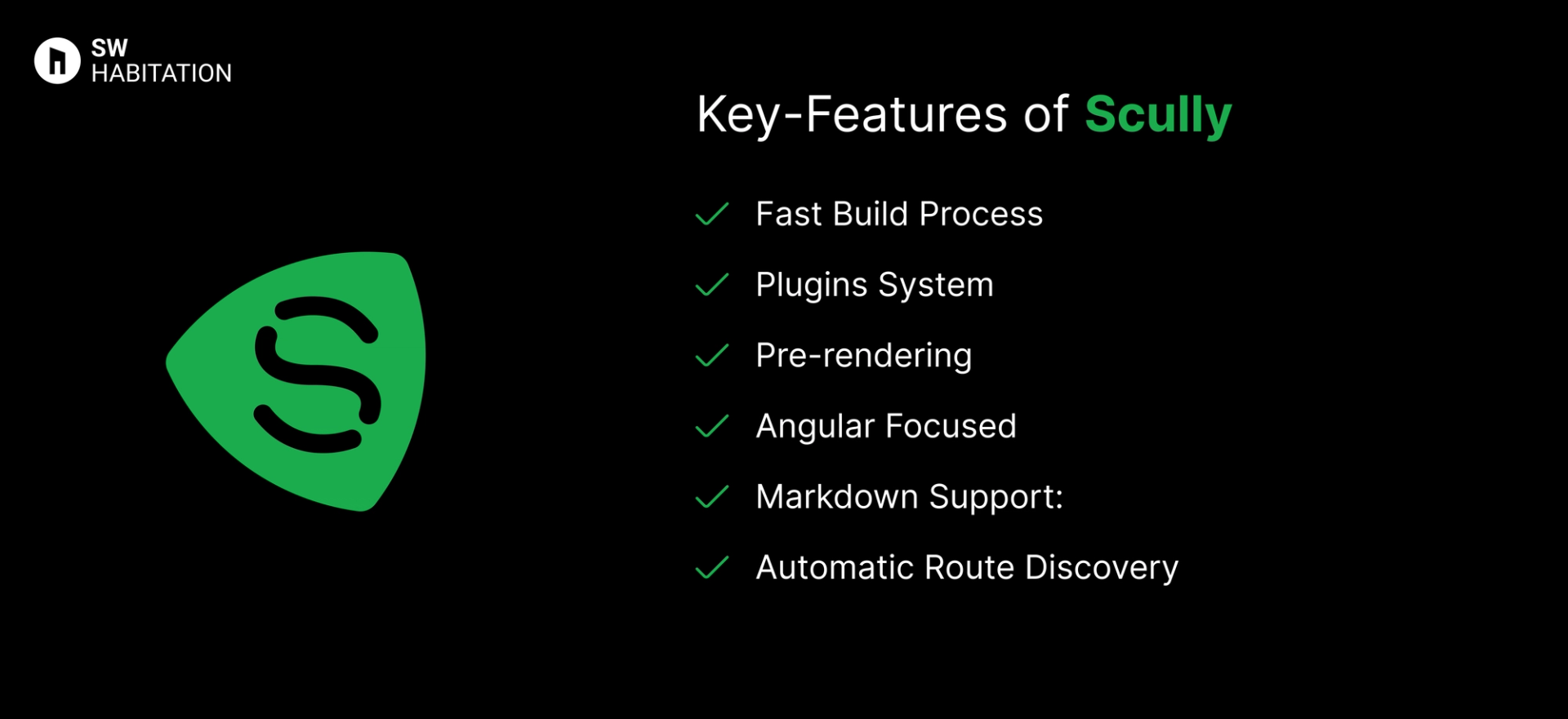Hexo vs. Scully

Hexo

Scully
Have you ever been to a website that loads super fast? Chances are it uses an SSG (Static Site Generator). It’s a tool that builds your site ahead of time, so when someone visits, they get the page instantly. No waiting around for things to load it’s just there.
What is Hexo?
Hexo is a Node.js powered static site generator that transforms Markdown files into static HTML pages. It’s particularly popular among bloggers and developers who love the simplicity of Markdown but also want a bit more control over the final website output as well.
Key Features of Hexo


- Theming System: Supports customizable themes for a personalized look.
- Markdown Support: Write your content in Markdown and let Hexo handle the rest.
- Extensive Plugin Ecosystem: Offers a range of plugins for SEO, analytics, and more.
- Deployment Made Easy: One-command deployment to platforms like GitHub Pages or Vercel.
- Supports Front-Matter: Add metadata like titles, tags, and categories to each post.
- Blazing Fast: Generates static files in seconds, even for large websites.
Advantages of Hexo
- Huge Plugin Library: Extend functionality effortlessly.
- Perfect for Blogs: Tailored to bloggers who want to focus on content.
- Minimal Setup: Simple installation and configuration.
- Speed: Lightning-fast build times.
- Markdown Focused: Keeps writing pure and distraction-free.
Disadvantages of Hexo
- Less Modern Than Some Alternatives: Lacks the modern features of frameworks like Next.js or Gatsby.
- Limited Dynamic Content: Not ideal for highly interactive sites.
- Node.js Required: Needs Node.js installed.
What is Scully?
Scully is the first static site generator for Angular. It takes your Angular app, crawls the routes, pre-renders each page, and exports static HTML files that can be served directly.
This results in faster load times and better SEO because search engines can read your content without waiting for JavaScript to execute.
Key Features of Scully


- Fast Build Process: Quickly converts your Angular app into a static site.
- Plugins System: Extend functionality with custom plugins for tasks like image optimization or content transformations.
- Pre-rendering: Generates static HTML for each route, improving performance and SEO.
- Angular Focused: Built specifically for Angular projects, making integration smooth.
- Markdown Support: Easily create content-driven sites using markdown files.
- Automatic Route Discovery: No need to manually define routes — Scully finds them automatically.
Advantages of Scully
- SEO-Friendly: Static content is easily indexed by search engines.
- Boosted Performance: Pre-renders pages for faster load times.
- Extendable: Customize builds with plugins tailored to your needs.
- Simple Setup: No complicated configurations —just install and go.
- Perfect for Angular: Seamlessly integrates with existing Angular projects.
Disadvantages of Scully
- Smaller Community: Compared to React or Vue SSGs, Scully has a smaller community and fewer resources.
- Learning Curve: Requires understanding of Angular and Scully’s pre-rendering process.
- Angular Only: Not suitable for projects outside the Angular ecosystem.
Comparison Between Hexo vs Scully
Use Cases of Hexo
- Fast Deployments: Get your site online with a single command.
- Technical Documentation: Write clean, organized docs quickly.
- Blogging: Built with bloggers in mind, especially those who love Markdown.
- Developer Portfolios: Show off projects with minimal effort.
Use Cases of Scully
- Portfolios: Highlight your projects with a sleek, fast portfolio.
- Personal Blogs: Markdown support makes blogging simple and fast.
- Documentation Sites: Pre-rendered content ensures fast, accessible documentation.
- Company Websites: Improved SEO and performance help showcase your business.
Other Resources
Conclusion
Static Site Generators are a big game changer if you’re looking to build a website that’s fast, secure, and easy to maintain. Whether you’re launching a personal blog, portfolio, or a business website, they give you the freedom to focus on what really matters, your content and your users without all the extra complexity.
The best part? You’re not locked into one way of doing things. You can choose the tools and tech you’re most comfortable with, and scale things up as your site grows. From lightning-fast load times to better SEO and easy hosting, SSGs make the whole process smoother.
At the end of the day, it comes down to what fits your workflow and goals best. Pick the one that feels right to your requirements, and you’ll be well on your way to creating a beautiful, high-performing website that you’re proud of 🙌
Frequently asked questions
What’s Hexo good for?
Hexo is good for building fast blogs and simple static websites that need to be quickly set up and easily managed.
Is Hexo easy to set up?
Yup, Hexo has a straightforward setup process and is easy to get running with minimal configuration.
Does Hexo use Markdown?
Yup, Hexo uses Markdown files to create content, so it's developer-friendly and easy for content creators to manage.
Does Hexo support plugins?
Yup, Hexo has lots of plugins available to extend its functionality, whether it’s for SEO, performance, or content management.
Is Scully easy to integrate with Angular?
Yes, integrating Scully with Angular is simple with just a few commands. It works alongside Angular’s powerful features but optimizes it for static site generation.
Does Scully handle SEO?
Yes, Scully automatically generates meta tags, sitemaps, and other SEO-friendly elements for better search engine optimization.
What’s the main benefit of using Scully with Angular?
Scully gives Angular apps static site generation (SSG) capabilities. It helps you pre-render pages at build time, improving page load speeds and search engine visibility.
Can I use Scully with any Angular project?
Yes, If you're already using Angular, you can add Scully to your project to generate a static version of it for better SEO and performance.
